
How to Use PCF8575 IO Expander Module I2C 16 PIN: Examples, Pinouts, and Specs
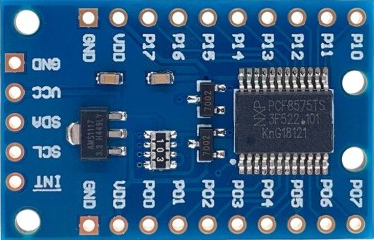
 Design with PCF8575 IO Expander Module I2C 16 PIN in Cirkit Designer
Design with PCF8575 IO Expander Module I2C 16 PIN in Cirkit DesignerIntroduction
The PCF8575 IO Expander Module is a 16-bit I2C-bus and SMBus I/O expander designed to effectively expand the number of digital input/output (I/O) pins available in a microcontroller or microprocessor-based system. This component is particularly useful in applications where additional I/O pins are needed for buttons, LEDs, or other digital signals, and is commonly used in conjunction with platforms like Arduino, Raspberry Pi, and other microcontroller boards.
Explore Projects Built with PCF8575 IO Expander Module I2C 16 PIN
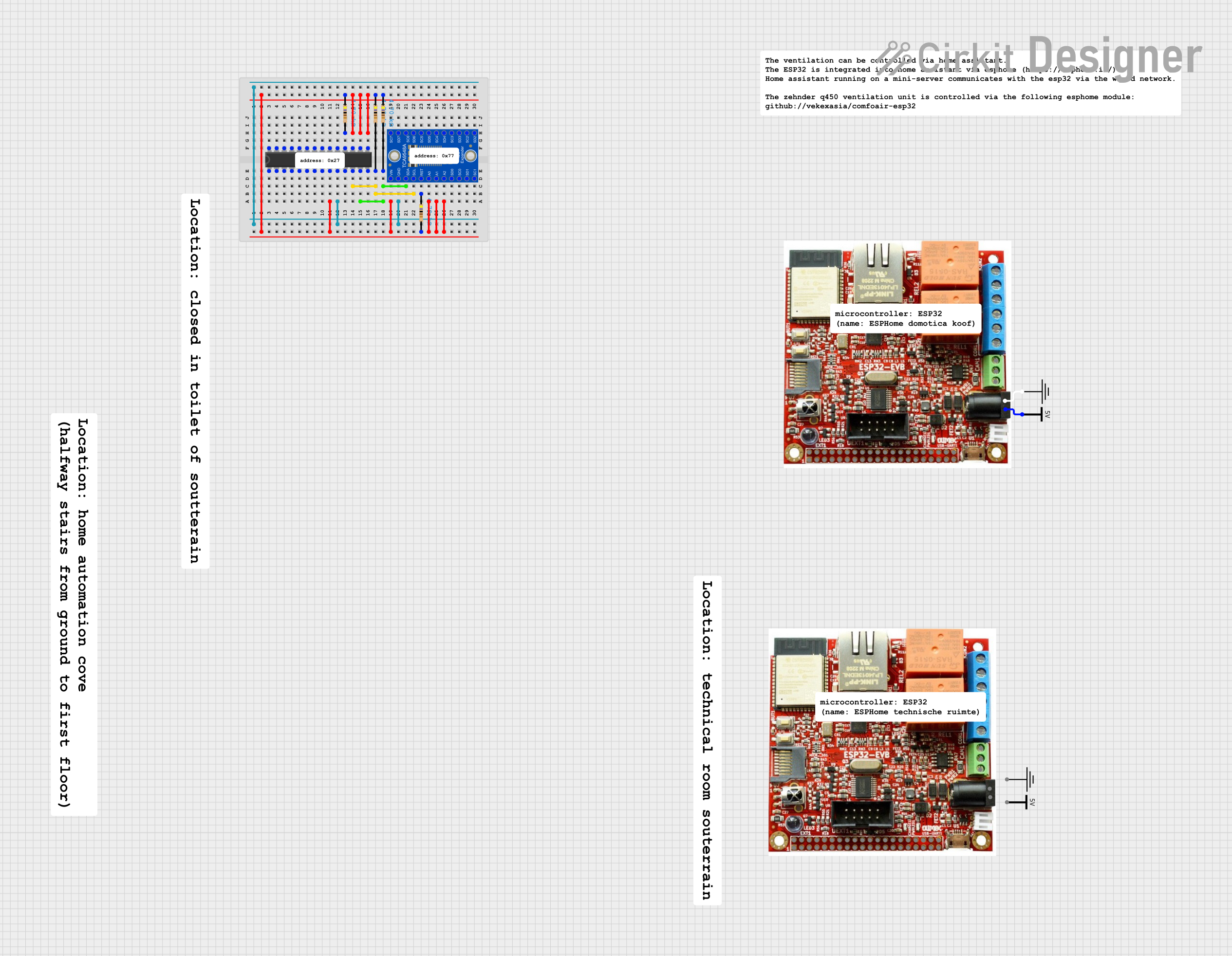
 Open Project in Cirkit Designer
Open Project in Cirkit Designer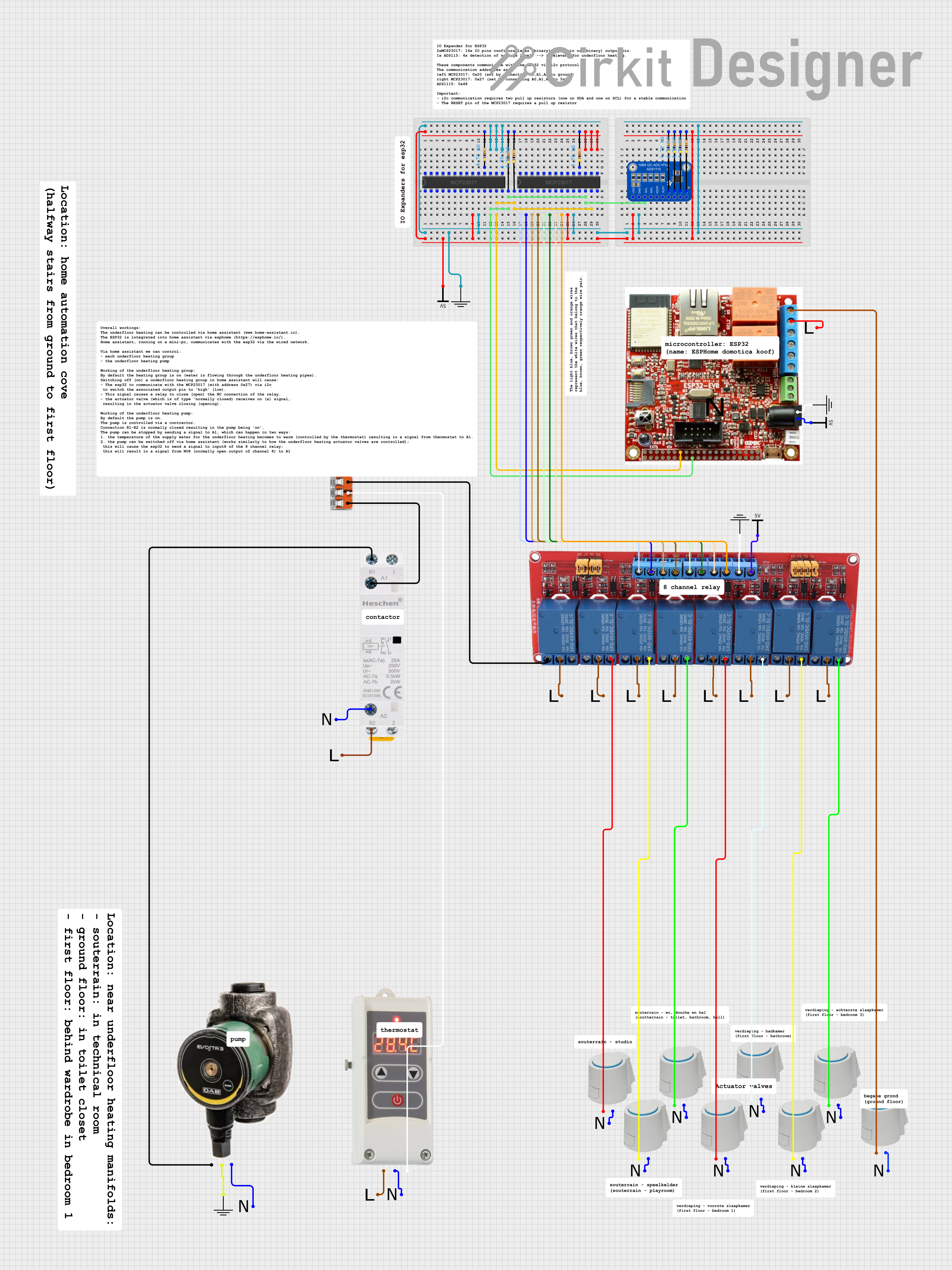
 Open Project in Cirkit Designer
Open Project in Cirkit Designer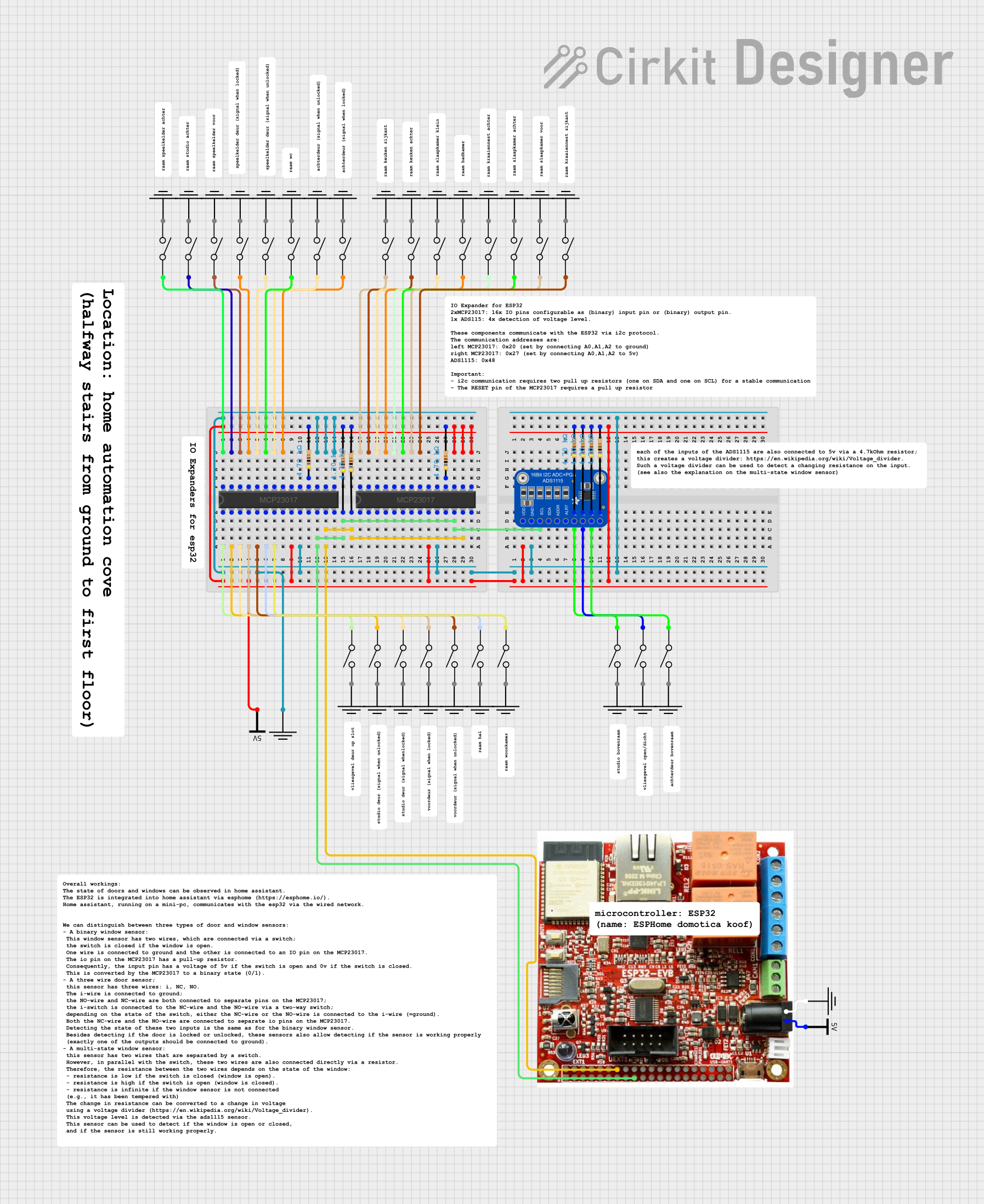
 Open Project in Cirkit Designer
Open Project in Cirkit Designer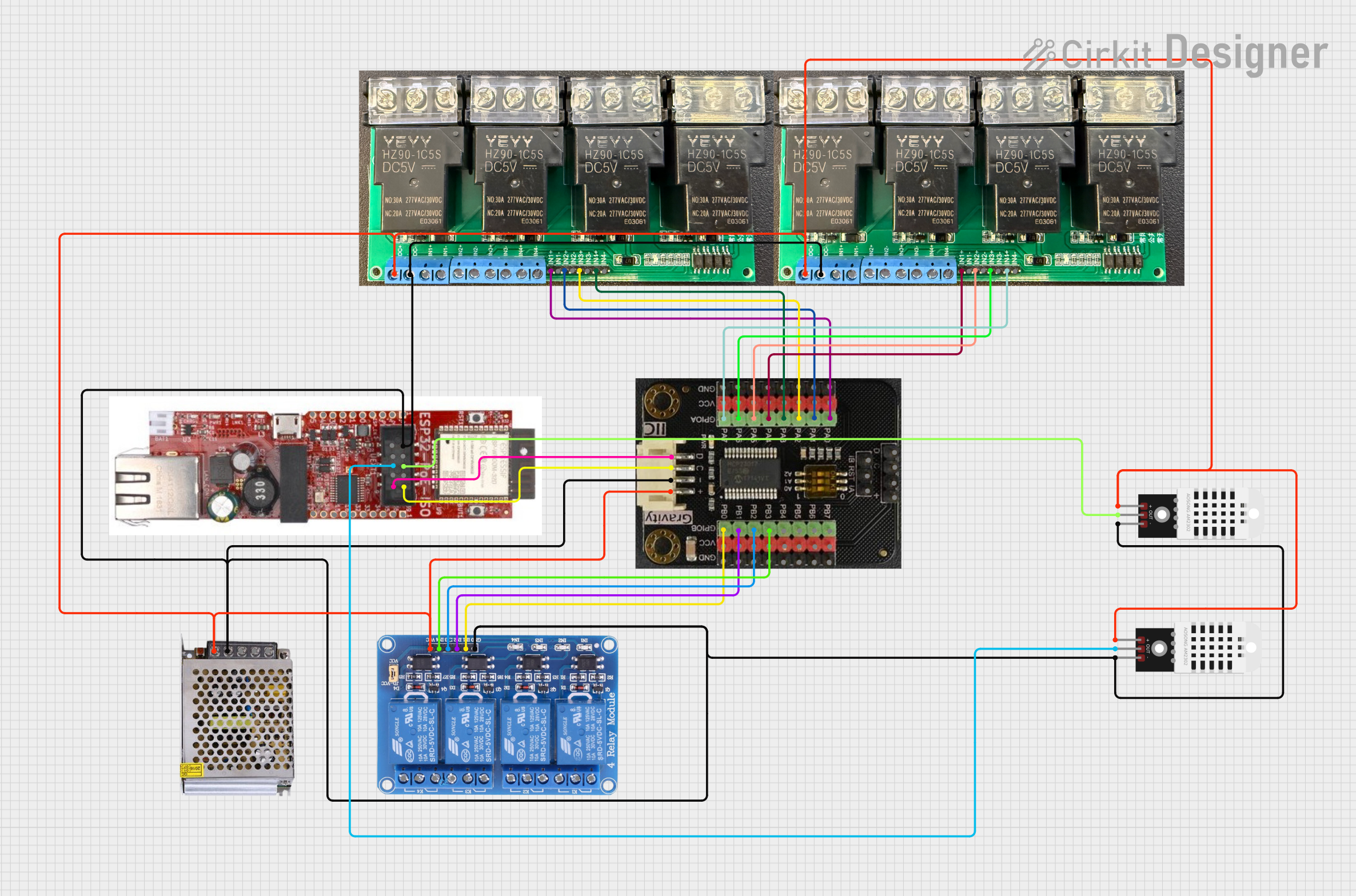
 Open Project in Cirkit Designer
Open Project in Cirkit DesignerExplore Projects Built with PCF8575 IO Expander Module I2C 16 PIN

 Open Project in Cirkit Designer
Open Project in Cirkit Designer
 Open Project in Cirkit Designer
Open Project in Cirkit Designer
 Open Project in Cirkit Designer
Open Project in Cirkit Designer
 Open Project in Cirkit Designer
Open Project in Cirkit DesignerCommon Applications and Use Cases
- Expanding I/O capabilities in microcontroller projects
- Interfacing with a large number of sensors or actuators
- Building keypad interfaces for user input
- Home automation systems
- Industrial control systems
Technical Specifications
Key Technical Details
- Operating Voltage: 2.5V to 5.5V
- I2C Bus Speed: Up to 400 kHz (Fast-mode)
- I/O Pins: 16-bit remote I/O pins for the I2C bus
- Interrupt Output: Active LOW interrupt output
- Addressing: 8 hardware address pins for 64 possible addresses
Pin Configuration and Descriptions
| Pin Number | Pin Name | Description |
|---|---|---|
| 1 | A0 | Address pin 0 |
| 2 | A1 | Address pin 1 |
| 3 | A2 | Address pin 2 |
| 4 | VSS | Ground (0V) |
| 5 | SDA | Serial Data Line for I2C |
| 6 | SCL | Serial Clock Line for I2C |
| 7 | INT | Interrupt Output |
| 8-23 | P00-P17 | 16 I/O pins |
| 24 | VDD | Positive Power Supply (2.5V to 5.5V) |
Usage Instructions
How to Use the Component in a Circuit
- Powering the Module: Connect VDD to a 2.5V to 5.5V power supply and VSS to ground.
- Setting the Address: Connect A0, A1, and A2 to either VDD or VSS to set the hardware address.
- Connecting to a Microcontroller:
- Connect SDA and SCL to the corresponding I2C data and clock lines on your microcontroller.
- Optionally, connect the INT pin to an interrupt-capable pin on your microcontroller to use the interrupt feature.
Important Considerations and Best Practices
- Ensure pull-up resistors are connected to the SDA and SCL lines, as they are required for proper I2C communication.
- Avoid setting the same address for multiple devices on the same I2C bus.
- When using the interrupt feature, configure the microcontroller's interrupt settings appropriately.
Example Code for Arduino UNO
#include <Wire.h>
// PCF8575 I2C address (adjust based on A0-A2 connections)
const int expanderAddress = 0x20;
void setup() {
Wire.begin(); // Initialize I2C
Serial.begin(9600); // Start serial communication for debugging
// Set all pins of PCF8575 to output
Wire.beginTransmission(expanderAddress);
Wire.write(0x00); // Low byte
Wire.write(0x00); // High byte
Wire.endTransmission();
}
void loop() {
// Toggle all pins
Wire.beginTransmission(expanderAddress);
Wire.write(0xFF); // Low byte
Wire.write(0xFF); // High byte
Wire.endTransmission();
delay(1000);
Wire.beginTransmission(expanderAddress);
Wire.write(0x00); // Low byte
Wire.write(0x00); // High byte
Wire.endTransmission();
delay(1000);
}
Troubleshooting and FAQs
Common Issues
- I2C Communication Failure: Check the wiring, ensure pull-up resistors are installed, and verify that no two devices have the same address.
- No Response from I/O Pins: Make sure the PCF8575 is properly powered and that the I2C address is correctly set according to the A0-A2 pins.
Solutions and Tips for Troubleshooting
- Use an I2C scanner sketch to confirm the PCF8575 is detected on the bus.
- Check for soldering issues or loose connections that might affect signal integrity.
- If using the interrupt feature, ensure the INT pin is correctly configured in your microcontroller's firmware.
FAQs
Q: Can I use the PCF8575 with a 3.3V system? A: Yes, the PCF8575 operates from 2.5V to 5.5V, making it suitable for both 3.3V and 5V systems.
Q: How many PCF8575 expanders can I connect to a single I2C bus? A: You can connect up to 64 devices, provided that each has a unique hardware address set by the A0-A2 pins.
Q: What is the maximum current each I/O pin can sink or source? A: The PCF8575 I/O pins are not designed to drive high currents. Refer to the datasheet for exact current specifications, and use external transistors or drivers if higher currents are needed.